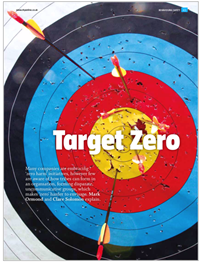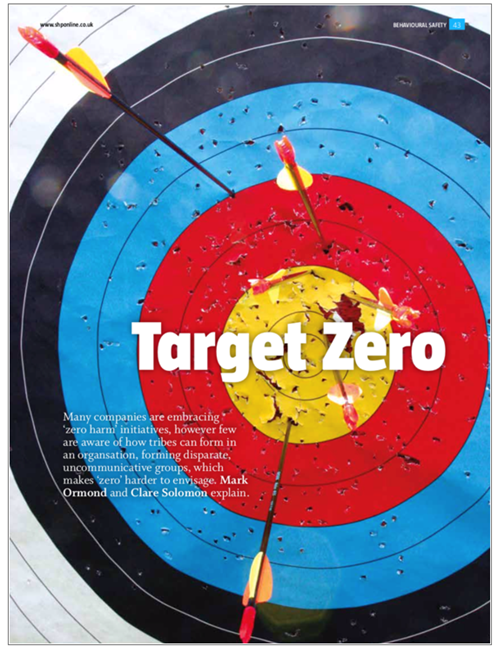Zero Suicide and the Discourse of Denial
One of the most unhelpful and ignorant approaches to suicide prevention is evidenced in the Zero Suicide movement (https://zerosuicide.sprc.org/ ). We see in this insane delusion with the zero discourse the: denial of death, denial of fallibility, denial of human freedom, the demonsiation of pain and suffering and, the delusion of binary oppositionalism. If you are searching for super dumb ideology in zero, this crazy discourse has to be it. Let’s have a look at just how crazy this ideology can get.
The strange thing about the emergence of this fixation with zero is of all places, it has emerged in the health care sector. Driven by that stupid question ‘what is a suitable number?’ it can only end up in the denial of fallibility, mortality and human freedom to chose death. The insanity of this zero discourse is that it emerges whilst other dimensions of the same health sector are seeking legalised assisted dying. Can it get more insane?
Euthanasia in Victoria
In 2017 the Australian state of Victoria legalised assisted dying for the terminally ill (https://www.abc.net.au/news/2017-11-29/euthanasia-passes-parliament-in-victoria/9205472 ). The move to allow assisted suicide acknowledges the fallibility of life and the ethic of care in compassion for those who want to die.
Victorian Health Minister Jill Hennessy said the lengthy debate had given the Parliament the opportunity consider what constitutes a ‘good death’.
We also saw in 2018 the prominent story of successful scientist David Goodall who travelled to Switzerland to trigger his assisted suicide (https://abcnews.go.com/International/australian-scientist-104-dies-travel-switzerland-assisted-suicide/story?id=55067324 ).
If one wants to think of helping in the true sense of ‘helping’ then here we have the complete contradiction in the discourse of ‘zero suicide’. There can be no helping, leadership, care or compassion in a discourse punctuated by zero.
There are so many unhelpful aspects of this emergence of zero ideology in the health care sector. Here we see the same trajectories and by-products of zero ideology and binary oppositionalism common to the risk sector coming into play. Here are some of the problems with Zero Suicide (ZS) discourse:
- ZS discourse demonsises the person who wants to die.
- The language of ZS suppresses confession (& counselling) and speaks in absolutes.
- The nonsense hindsight language of ‘all accidents are preventable’ infuses the language of ZS.
-
The denial of pain and suffering in ZS exacerbates the plight of those who wish to helped to die.
-
ZH demonsises the helper who assists those who want to die.
-
The language of ZS normalises the speaking of absolutes to fallible people.
-
The language of ZS can only lead to frustration and non-achievement of goals.
-
The quest for perfection in ZS can never be achieved and so normalises absurd goal setting.
-
ZS is stuck in behaviourism-cognitivism and the denial of the embodied human. ZS is constructed as a cognitive problem.
-
When one looks at all the language/semiotics in the ZS discourse (http://zerosuicide.sprc.org/) it denies zero and states it is an unachievable goal therefore denying the fundamentals of SMART goals and making the language of zero meaningless.
-
In ZS the language is about higher performance not zero, making the language of zero mean ‘try harder’.
-
In this way ZS becomes a mantra/brand for a ‘trendy’ way of articulating care that contradicts itself. ZS becomes no more than a tokenistic drive to care, unfortunately the language of ZS demonsises suicide ideation.
-
If one is contemplating suicide one wouldn’t seek help or moral support from a person spruiking ZS, this is because the discourse of ZS embeds judgmentalism in the language.
-
ZS discourse encourages a fixation on numbers and numerics driving attention away from care and helping.
-
In ZS success is therefore defined numerically. This is why the metaphor of the target is made attractive. We find similar examples in the risk industry.
-
The language of ZS promotes a focus on failure.
-
A numerical discourse drives the ‘fudging’ of numbers and numerics in reporting as has been experienced in the risk industry.
-
The ZS group don’t talk about the nature of suicide just the numbers of suicide.
-
The same nonsense of ‘heroes’ and ‘champions’ that toxifies the risk sector also has been imported into ZS.
-
The assertions of ZS have no substance or evidence in reality (http://zerosuicide.sprc.org/champions ), for example: ‘Zero Suicide champions pursue safer, more effective suicide care approaches in health care systems and know that reducing suicides for those at risk is achievable’. The same false assertions are evident on the global zero vision website (http://visionzero.global/ ). Any discerning critical thinking can pull apart these assertions because that is all they are. Nothing attributed to ZS is more than what is already done in care for those contemplating or resulting from attempted suicide. Nothing proposed by zero vision in risk is any more than what anyone does in standard risk management practice. All that results is a lot of ‘smoke and mirror’ activity and no substance.
-
ZS contradicts the professionalism of groups like Lifeline and Beyond Blue who accept the reality of fallibility and a person’s right to die. The same is true for zero harm in risk and safety, all that is proposed as a zero harm strategy is nothing more than more of the same.
-
The ZS group uses the resources of non-zero suicide providers to promote the delusions of ZS.
-
ZS because of its behaviourist-cognitvist assumptions promotes a regime of suicide as ‘wrong thinking’. Similar anthropological assumptions sit at the foundation of zero vision discourse.
-
The language of ZS implies that those outside of the ZS camp care less about people at risk of suicide than ZS ideologues. After all, aren’t you a ZS Champion?
-
Compare the language of groups like Zero Suicide with the experts like Lifeline or beyond Blue. The language of ZS lacks any focus on ‘helping’, ‘learning’, ‘listening’ and ‘fallibility’. The only mention of compassion is within the context of fatigue. The word ‘resilience’ is only used within the context of systems. On the Lifeline website there are over a 300 references to ‘helping’, ‘compassion’, ‘vulnerability’ and ‘suffering’.
What is perhaps the most disturbing aspect of the Zero Suicide Movement, like the Zero Vision Movement in risk is the denial of death, fallibility and the demonisation of pain and suffering. It is this kind of demonisation that constrains the voice for compassion in assisted dying. We still bear with the lingering influences of Augustinian-Calvinist ‘Original Sin’ and Penal Substitionary Atonement sustained through Kantian ethics. We see this played out in the DuPont Bradley Curve and in zero suicide ideology that never admits or defines its hidden ideology/philosophy.
There are other way of understanding things as was discussed in my latest book: Fallibility and Risk, Living with Uncertainty.
To see other views on harm and suffering, particularly those different to the ideas put forward by Dekker (The End of Heaven) and zero ideology you can read:
Bastian, B., (2018) The Other Side to Happiness, Embracing a More Fearless Approach to Living.
Becker, E., (1997) The Denial of Death.
Benner, D., (2016) Human Being and Becoming, Living the Adventure of Life and Love.
Carson, B., (2008) Take the Risk, Learning to Identify, Choose, and Live with Acceptable Risk.
Ellul, J., (1988) Anarchy and Christianity.
Kierkegaard, S., (1974) Fear and Trembling and Sickness Unto Death.
Radley, A., (1991) The Body and Social Psychology.
Radley, A., (1994) Making Sense of Illness, The Social Psychology of Health and Disease.
Rambelli, F., (2013) A Buddhist Theory of Semiotics, Signs, Ontology, and Salvation in Japanese Esoteric Buddhism.
Varela, F, Thompson, E., and Rosch, E. (1993) The Embodied Mind.
Weaver, N., (2013) The Theology of Suffering and Death, An Introduction for Caregivers.
In closing, one might like to have a look at the semiotics of Zero Suicide. The metaphor for ZS is the ‘bullseye’ (http://zerosuicide.sprc.org/toolkit/lead ), typical of zero semiotics and all target-focused thinking. The promotion of lower-order goals of course devalues the focus on higher-order goals that cannot be measured. The following picture is taken from Behavioural Safety October 2014 (www.shponline.co.uk ).





Do you have any thoughts? Please share them below